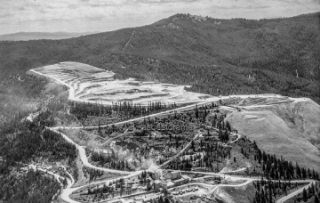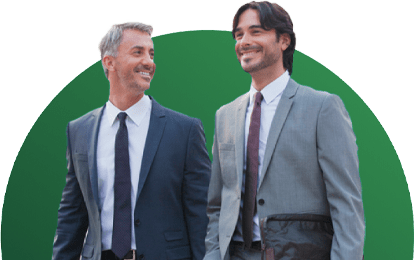Get Your Free Mesothelioma Guide

Find a Top Mesothelioma Doctor

Access Help Paying for Treatment

Superfund is the commonly used name for the Comprehensive Environmental Response, Compensation and Liability Act of 1980 (CERCLA), a program established by the U.S. Environmental Protection Agency (EPA) to clean up hazardous waste sites. These Superfund sites include ones polluted or contaminated by asbestos.

Once a site receives Superfund designation, the EPA begins to clean up the site. The agency can force responsible parties to participate in the cleanup. As well as reimburse the government for the cleanup costs. Superfund also refers to the trust fund established by Congress that pays for site cleanup.
Chief among asbestos Superfund sites is Libby, Montana. It has experienced a high rate of malignant mesothelioma cancer because of the exposure levels. A contaminated mine released asbestos throughout the town, sickening thousands of residents.
The highest priority Superfund sites are added to the National Priorities List (NPL). The list publicly identifies sites under investigation. In September 2023, there were approximately 1,336 Superfund sites on the NPL, and 16 of them contained asbestos hazards.
After a site is added to the NPL, it can take months — even years — before cleanup begins. And once initiated, the process is very thorough and involves strict guidelines. Superfunds that contain asbestos must be evaluated, tested and secured before removal begins.
The Superfund cleanup process involves a series of steps, beginning with site assessment. This first step requires investigators to assess the hazard level of the site. They decide whether immediate action is needed to alleviate asbestos concerns. Once the site has been assessed, it is added to the NPL, and cleanup plans are established. After this stage, the EPA has a number of responsibilities to ensure the site is thoroughly cleaned and safe for public use.
EPA Cleanup Responsibilities
Throughout the Superfund cleanup, the EPA communicates with the public about clean-up activities. The EPA informs local residents through public notices about when and how the cleanup will happen.
Get Your Free Mesothelioma Guide

Find a Top Mesothelioma Doctor

Access Help Paying for Treatment

The EPA developed a site assessment framework for asbestos-containing Superfunds. It established a standardized and consistent approach to investigating asbestos hazards.
This framework helps EPA workers determine an appropriate action for handling asbestos concerns. It ensures proper assessment and considers current and future land use for the public.
Asbestos-contaminated Superfunds are addressed according to priority. High-risk sites that pose exposure hazards to the public will naturally be addressed first.
In some cases, the EPA must work with other parties who are responsible for the site and this can slow cleanup. The following asbestos-contaminated Superfunds are examples of sites currently undergoing cleanup.

Possibly the most recognized asbestos-contaminated Superfund is the site of a vermiculite mine in Libby, Montana. While in operation, the Libby mine, created in the 1920s by the Zonolite Company and subsequently bought and operated by W.R. Grace & Co. in 1963, produced approximately 80% of the world’s supply of vermiculite.
Unfortunately, the vermiculite from the Libby mine contained asbestos naturally. The vermiculite was given freely to the people, businesses and schools of the town for decades.
The EPA first sent an Emergency Response Team to the Libby Asbestos Superfund Site in 1999. In 2002, Libby was added to the NPL. It became America’s deadliest Superfund site.
Mortality rates from asbestosis in Libby were drastically higher than normal. Between 1979 and 1998, they were 40 to 60 times higher than the state of Montana and the United States, respectively. The Agency for Toxic Substances and Disease Registry (ATSDR) reported this data.
For the first time in EPA history, administrator Lisa Jackson issued a Public Health Emergency for Libby in June 2009 because of the level of asbestos hazards and the number of asbestos-related diseases reported in the area, including mesothelioma and other respiratory conditions. More than 2,400 Libby residents have been diagnosed and treated for mesothelioma and other asbestos-related conditions.
In May 2011, the EPA determined that although some risks still exist, it had reduced the level of airborne asbestos concentrations in the town by a factor of 10,000 in comparison to asbestos levels during the period of mining operations.
The EPA announced in July 2017 that the cleanup was nearly complete in Libby and the nearby town of Troy. On July 1, 2020, the EPA officially transferred oversight and maintenance of much of the project to the Montana Department of Environmental Quality, a major step toward completion.
In September 2021, the EPA announced the deletion of another portion of the Superfund site from the NPL. The segment involved all roads and major highways in and between Libby and Troy.
In 2023, W.R. Grace agreed to an $18.5 million settlement to restore damaged lands in and around the Superfund site.
Cleanup of the actual mine site, which will continue for several more years, will still be overseen by the EPA.
Located in Klamath Falls, Oregon, this residential community was built on the former site of a Marine Recuperation Barracks facility. Many of the buildings from the Marine facility were made with asbestos-containing materials. When they were demolished, the debris was simply covered with soil instead of being taken to a landfill capable of handling asbestos. An asbestos removal project was initiated in 2003, but residents were forced to permanently relocate in 2006. The North Ridge Estates was added to the NPL in September 2011. Soil cleanup began in 2016 and continues on a seasonal schedule because heavy work cannot be conducted during winter months.
Located in Victorville, California, this site was added to the NPL in 1990 for asbestos contamination in the soil and debris scattered throughout the base. Early action was taken in 1990 to eliminate serious hazards, and a review of the site was conducted in 2016, but further cleanup is needed before it can be deleted from the NPL. Air Force bases are historically noted for asbestos hazards.
A sanitary landfill on the Pensacola Naval Air Station was of specific interest. It was used from the 1950s to 1976 and was determined to contain asbestos from building demolition, among other contaminants. The Navy made significant use of asbestos in the construction of buildings. The construction debris field extended from the south end of North Pond to Powerline Road. A plan to remediate the many contamination problems was developed and implemented.
The EPA placed the landfill on the regulator’s list of Superfund sites because of the amount of asbestos-related cleanup that was necessary. A five-year review was conducted by the EPA in 2013 and site cleanup is expected to continue for many years.
Although Naval Weapons Station Earle did not contain as much asbestos as some other naval installations, several sites and buildings C-16, C-25, C-40, 511, 553-555 and 557 were known to have been built with asbestos-containing materials. This asbestos contamination, along with other dangerous contaminants, forced the EPA to designate Naval Weapons Station Earle a Superfund site. The station was added to the EPA’s National Priorities List in 1990.
A 1990 to 1995 investigation of 27 sites on the base revealed the presence of lead, chromium, VOCs and asbestos. The investigation included the testing of several samples of groundwater, soil and sediment to determine the nature and the extent of the contamination.
Two landfill locations on the property contained a mix of domestic and industrial wastes and likely were the final destination of asbestos-contaminated materials. Along with other dangerous substances, asbestos has likely contaminated the soil in these areas, according to EPA Superfund records.
These individual sites are currently being cleaned in accordance with the Department of Defense’s Installation Restoration Program. In addition, the Navy is also investigating any possible effects the contaminants may have had on each watershed in the facility. The technologies used in the project, as well as timetables for completion, have been reviewed by the EPA.
Despite its reputation as a polluted site, some civic leaders resisted the EPA’s designation of the Tacoma Dry Dock Shipyard as a Superfund in 1983 and, therefore, worked for more local controls. Many local leaders viewed the Superfund designation as a significant blow to the area’s economy because it might have discouraged private investment.
The extent of the Bay’s pollution, however, was impossible to ignore. Commencement Bay was placed on the National Priorities List, meaning it was among the nation’s most polluted sites. Contaminated sediment was found throughout all the waterways, including heavy metals (zinc, lead, mercury, cadmium, copper, nickel), and both high and low PAHs, phthalates and extensive, cancer-causing PCBs.
Part of the solution to the Superfund listing, as an economic roadblock, however, was met when much of the polluted area, including the historic Tacoma Dry Dock, was acquired by the Tacoma Port Authority’s Commencement Bay Industrial Development District. As a result, the cleaning of the remaining asbestos contamination may see some delays, but the Superfund designation should secure eventual cleanup.
In 2013, soil cleanup began and more than 180 residential properties now have clean soil. The EPA conducted a five-year review of Commencement Bay in 2014 and continues to oversee cleanup operations.
The Curtis Bay Coast Guard Yard, also known as the Coast Guard Yard, was responsible for vessel repair and overhaul, manufacturing activities and buoy construction. Operations lasted well into the 1970s. One result of its work was debris that contaminated the facility with toxic substances like asbestos, polychlorinated biphenyls (PCBs), pesticides and dioxin. In 2008, the EPA signed a federal facility interagency agreement with the Coast Guard for the cleanup of the Curtis Bay Coast Guard Yard, which was designated as an EPA Superfund site in 2002. The agreement mandated that the Coast Guard identify environmental impacts associated with its past activities and take the necessary actions to protect the community and the environment.
The Nitro, West Virginia, facility that housed Fike Chemical Inc. was added to the NPL in 1983 for asbestos hazards and a number of other toxins. Initial cleanup was performed in 1984 and the site was last worked on in 2001. The EPA began conducting a five-year review of the site in 2017 and noted that the site is safe in the short term, but long-term work is required to finish the cleanup. Asbestos concerns stem from building structures and other parts throughout the facility. Chemical plants used asbestos in many applications primarily because the mineral was heat-resistant and reduced the risk of fires.

Get help paying for mesothelioma treatment by accessing trust funds, grants and other options.
Get Help NowA 2007 analysis by the Center for Public Integrity found some of the top offenders for asbestos-contaminated sites.
Companies Associated with Asbestos Superfunds
In addition to paying for Superfund clean-up costs, these companies have paid out millions for verdicts in asbestos lawsuits. Many of these companies have faced thousands of asbestos-related lawsuits by workers who developed cancer from their products. Some of them also created asbestos trust funds through bankruptcy reorganization.
While asbestos was affordable for companies to use decades ago, it has resulted in a heavy cost to human life and impacted countless families. No Superfund site provides a greater example of this cost than Libby, Montana. A 2021 study reported that approximately 694 Libby residents have died of asbestos-related diseases. Both W.R. Grace and the state of Montana have been held liable in U.S. courts in lawsuits filed by Libby residents.
Recommended ReadingYour web browser is no longer supported by Microsoft. Update your browser for more security, speed and compatibility.
If you are looking for mesothelioma support, please contact our Patient Advocates at (855) 404-4592
The Mesothelioma Center at Asbestos.com has provided patients and their loved ones the most updated and reliable information on mesothelioma and asbestos exposure since 2006.
Our team of Patient Advocates includes a medical doctor, a registered nurse, health services administrators, veterans, VA-accredited Claims Agents, an oncology patient navigator and hospice care expert. Their combined expertise means we help any mesothelioma patient or loved one through every step of their cancer journey.
More than 30 contributors, including mesothelioma doctors, survivors, health care professionals and other experts, have peer-reviewed our website and written unique research-driven articles to ensure you get the highest-quality medical and health information.
My family has only the highest compliment for the assistance and support that we received from The Mesothelioma Center. This is a staff of compassionate and knowledgeable individuals who respect what your family is experiencing and who go the extra mile to make an unfortunate diagnosis less stressful. Information and assistance were provided by The Mesothelioma Center at no cost to our family.LashawnMesothelioma patient’s daughter


King, D. (2024, December 6). Asbestos Superfund Sites. Asbestos.com. Retrieved April 15, 2025, from https://www.asbestos.com/asbestos/superfunds/
King, Daniel. "Asbestos Superfund Sites." Asbestos.com, 6 Dec 2024, https://www.asbestos.com/asbestos/superfunds/.
King, Daniel. "Asbestos Superfund Sites." Asbestos.com. Last modified December 6, 2024. https://www.asbestos.com/asbestos/superfunds/.
An occupational scientist or another expert who specializes in occupational hazards reviewed the content on this page to ensure it meets current scientific standards and accuracy.
Arti Shukla, Ph.D., is an internationally renowned asbestos researcher known for her achievements in identifying biomarkers that cause mesothelioma. She is the director of the Shukla Research Lab, as well as a professor of pathology at The University of Vermont Larner College of Medicine.
Our fact-checking process begins with a thorough review of all sources to ensure they are high quality. Then we cross-check the facts with original medical or scientific reports published by those sources, or we validate the facts with reputable news organizations, medical and scientific experts and other health experts. Each page includes all sources for full transparency.
Please read our editorial guidelines to learn more about our content creation and review process.
